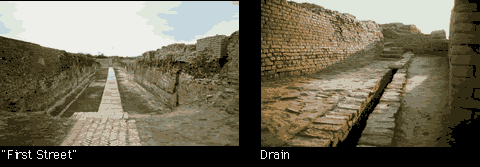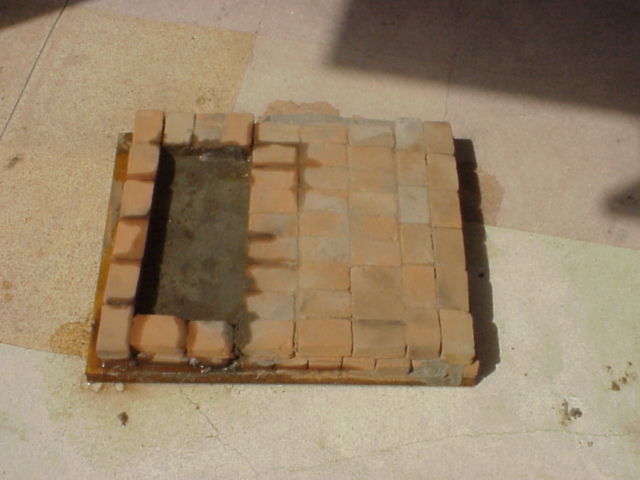Cities and Daily Life
Daily life
In 1922 Archaeologists found the remains of two cities, Harappa and Mohenjo- Daro. These and other cities found in this region have been labeled as the Indus Valley Civilization. This remarkable civilization's standards are shown in their houses. The houses were usually one or two stories high, and their style was quite homogeneous. They had no windows but they had their own bathrooms and the sewage system was very sophistocated.
Their life style was quite advanced. Men and women wore beautiful robes and women also wore intricate jewelery and bracelets. For entertainment, evidence suggests they enjoyed baths and dancing. Even small pools have been found. The larger pools could also have been used for religious purposes. Regarding art, findings have suggested that people at that time were quite good at making pottery, weaving, and doing metal working. Small statues have been found which could have been toys or art. However, no wall carvings or paintings have been found to enable us to learn more about their civilization.
It is strange, but the materials used in making some bowls was imported. These materials were gold and silver. It is assumed that people of that era had contacts with other ancient cities such as the ones of Mesopotamia and Ancient Egypt. A stable food supply, and rivers made barter easy. The farmers grew various crops and were excellent farmers. Evidence explains that they grew barley, peas, melons, wheat and dates. They also had large central storage buildings for grain.
It is believed that this civilization disappeared around 1500 B.C. Due to advanced research, sites have been found and evidence suggests that these people were very clever.

Student model of the great bath
Streets Of Harappa
Some cities were made of two sections which were surrounded by walls, the Citadel and the lower town. The lower town mostly had all the streets. The lower town was divided into a number of blocks, with streets running north-south and east-west, Each block divided further into small lanes. There is a very huge street which is 1 mile long, and it is called First Street.

More than 1,500 sites have been discovered, and about ten of them are cities. Each major city was linked with others by different highways. The doorways in ancient times in Harappa show that it was really dusty. The dirt and dust in the streets collected and slowly covered the doorways with dust and dirt.
.
Photos from Harappa.com
Harappan Houses
The Harrapan houses were solidly built of bricks. Many of the houses were huge. They even had bathrooms and lavatories. This architecture is a great example of how people could build such excellent houses before modern technology. The houses had many rooms connecting to a central open courtyard. Therefore, there were no windows looking toward the main street. This gave privacy to the people living inside. The only openings in the houses were small because this prevented the hot summer sun from heating the inside of the amazingly built house.
 The
rich lived in houses with many rooms and a central courtyard. The houses were
purposely built on a high platform to protect them from floods. However, the
poor lived in houses with single rooms.
The
rich lived in houses with many rooms and a central courtyard. The houses were
purposely built on a high platform to protect them from floods. However, the
poor lived in houses with single rooms.
They had advanced drainage systems. Drains started from the bathrooms of the houses and joined the main sewer in the street, which was covered by brick slabs. When the residents came back from work, they often stopped to take a shower, which was built on the first story. The kitchens and the other rooms were built on higher stories.
Evidence shows that the Indus Valley Civilization was highly organized.
Model of Harappan House
The Drainage Systems

Photo from Harrappa.com


